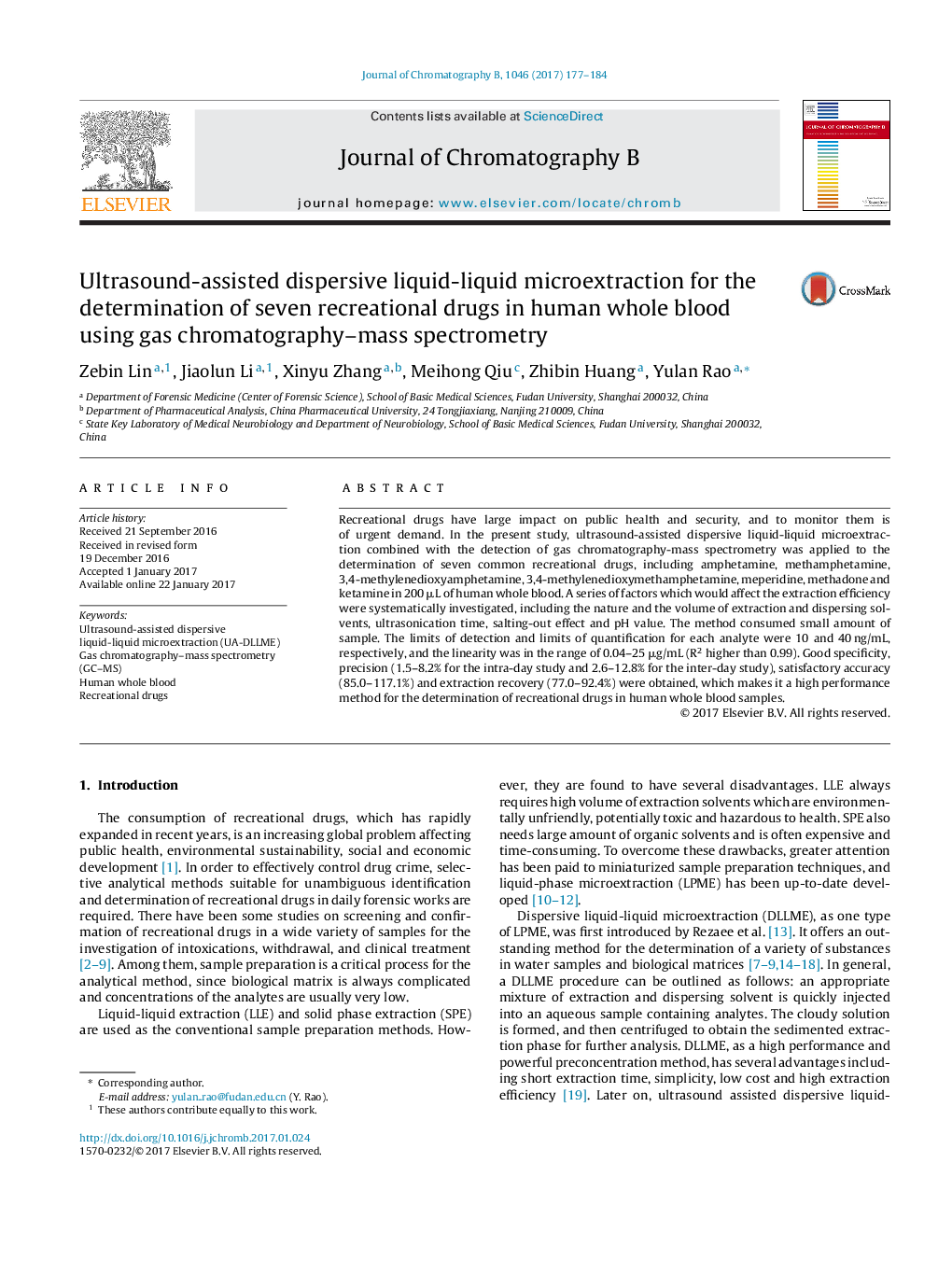| Article ID | Journal | Published Year | Pages | File Type |
|---|---|---|---|---|
| 5136464 | Journal of Chromatography B | 2017 | 8 Pages |
Abstract
Recreational drugs have large impact on public health and security, and to monitor them is of urgent demand. In the present study, ultrasound-assisted dispersive liquid-liquid microextraction combined with the detection of gas chromatography-mass spectrometry was applied to the determination of seven common recreational drugs, including amphetamine, methamphetamine, 3,4-methylenedioxyamphetamine, 3,4-methylenedioxymethamphetamine, meperidine, methadone and ketamine in 200 μL of human whole blood. A series of factors which would affect the extraction efficiency were systematically investigated, including the nature and the volume of extraction and dispersing solvents, ultrasonication time, salting-out effect and pH value. The method consumed small amount of sample. The limits of detection and limits of quantification for each analyte were 10 and 40 ng/mL, respectively, and the linearity was in the range of 0.04-25 μg/mL (R2 higher than 0.99). Good specificity, precision (1.5-8.2% for the intra-day study and 2.6-12.8% for the inter-day study), satisfactory accuracy (85.0-117.1%) and extraction recovery (77.0-92.4%) were obtained, which makes it a high performance method for the determination of recreational drugs in human whole blood samples.
Related Topics
Physical Sciences and Engineering
Chemistry
Analytical Chemistry
Authors
Zebin Lin, Jiaolun Li, Xinyu Zhang, Meihong Qiu, Zhibin Huang, Yulan Rao,
